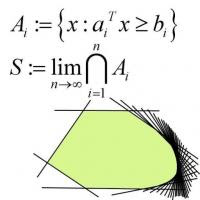Supposedly, it is argued, inconsistency arises from differing opinions and "consensus" has to be reached. In the Singapore Government, the Analytic Hierarchy Process (AHP) is used to make purchase decisions for large buys. The award of the Marina Bay Sands and Resort Worlds Sentosa contracts are examples of decisions made via the AHP. The AHP is tolerant of inconsistency and one can "measure" it via a metric called the Consistency Ratio, which paradoxically is a measure of inconsistency rather than consistency.
Though seen as a necessary aspect of group decision making, the allowance for inconsistency can, nonetheless, be taken advantage of to promote an alternative by an interested party amongst the decision makers. This is especially true when the allowable margins for inconsistency are large as are those for the AHP. Such issues may arise in other quantitative group decision making methods.
Globally, for the AHP, practitioners take the recommendation of the inventor of the method that the Consistency Ratio should be less than 10% (8% and 3% for the special cases of 4 and 3 alternatives/criteria respectively). These guidelines, I have found, are unsatisfactory. Originally, I noted how obtuse the definition of the Consistency Ratio was to decision makers (even to those who are mathematicians and engineers). The Consistency Ratio is defined in terms of the eigenvalues of a matrix of preference ratios. On the face of things, one would not be able to tie the metric meaningfully to inconsistency as people might intuitively understand it or model it quantitatively. I made an attempt to link the Consistency Ratio to a model of error in related human judgments (i.e. inconsistency) and found how poor the accepted guidelines are. (Draft article here.) My sense is, the guidelines have not been tightened because few on the planet understand the Consistency Ratio.
On the flip side, many people have a good feel of how much inconsistency they can get away with without even getting close to violating the Consistency Ratio guidelines. This statement probably extends beyond the AHP. I claim that a member of the decision making group with a hidden agenda can push for certain strategically chosen judgments that will (possibly strongly) affect the decision, but be accepted by the group for the sake of "consensus". This is basically it.
What I would recommend, however, is that groups of decision makers be forced to bite the bullet and ensure consistency in their judgments. This would inoculate the decision from inconsistency-based subversion. People will have to work harder, but the fact of the matter is, consensus is meant to be an agreement on a position, not a disparate cloud of judgments that do not quite mesh with each other. In a manner of speaking, advocates of allowing "inconsistency" as a necessary byproduct of group consensus are promoting laziness in group decision making.
On a separate matter, I've also written on a vulnerability and failing of the AHP, how one might go about manipulating it, and how a minimal modification would solve the problem. (Article here.)
As a post script, I would recommend that the public understand how public money is being spent, so as to be able to check "government excesses". Somehow all this aspect of decision making has a bit of the flavor of the Sophists, who were accused of teaching a system of false and pernicious tricks of verbal fence whereby anything whatever could be proved, and the worse be made to seem the better. Would anyone like to be coached in numerical sophistry? I'm sure I could come up with a syllabus if there is sufficient interest. And like the Sophists, I will charge tuition.
--
In a manner of speaking, the "government excesses" I alluded to might entail things like the purchase of 472 designer chairs costing $575 each by the Ministry of Manpower. In reply to queries, a MOM spokesperson said, "We conducted an open tender in accordance with government procurement guidelines. The brand of the chairs was not specified in the tender invitation... Taking all these factors into account, the successful tenderer meets our requirements and offered the best value for money over the lifespan of the chairs." A $272,000 purchase does not mandate the use of a quantitative method like the AHP, which leads one to wonder how the decision was arrived at. If the details of that procurement decision were made public, I hope it would stand up to scrutiny.




No comments:
Post a Comment